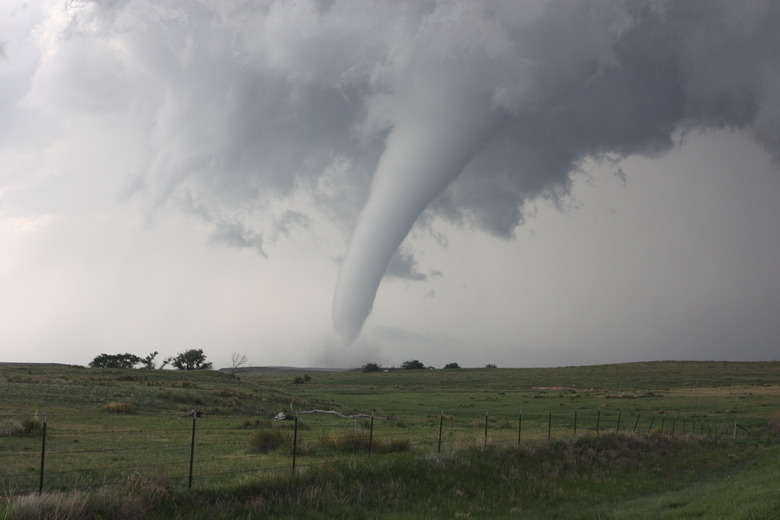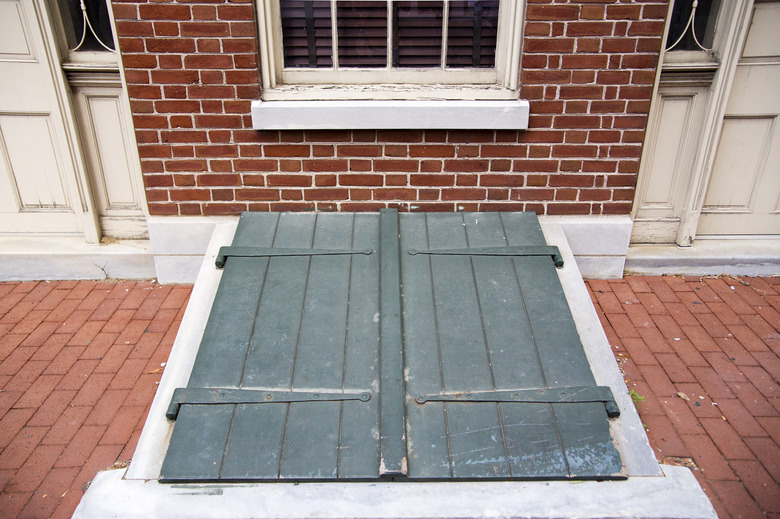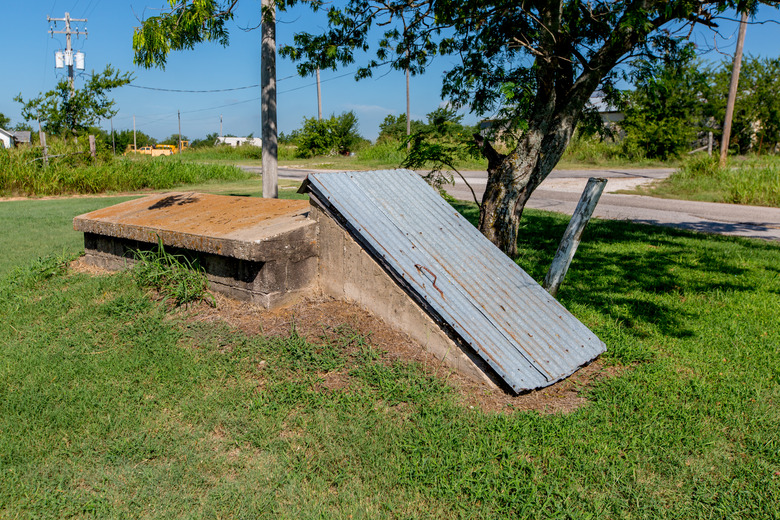Should You Install A Tornado Safe Room? Here's What You Need To Know
We may receive a commission on purchases made from links.
Tornadoes are nature's most devastating storms, with wind speeds that can reach over 300 miles per hour within the familiar funnel-shaped cloud. While the storms can level an entire neighborhood in minutes, a tornado safe room can help prevent injury to those inside.
If you live in what's referred to as "tornado alley" — you may be curious how these storm shelters are built on or around your home, what the pricing looks like and whether or not they'll give you peace of mind when the tornado sirens are sounding.
The Danger of Tornadoes
The Danger of Tornadoes
Unlike hurricanes, which meteorologists can track for days before they reach land, tornadoes develop within minutes. They are the products of certain conditions that develop within violent thunderstorms. They strike quickly, so it is important to have an emergency plan should your area be under a tornado warning, which means a tornado has been sighted by a spotter or indicated by radar.
They strike so quickly that tornadoes are not categorized until after they pass. While hurricanes are labeled category one through five based on their wind speed, tornadoes are rated on the enhanced fujita (EF) scale based on the damage they cause. EF0 is the least amount of damage, and EF5 is the most, which means extreme winds and the total destruction of buildings.
Though often you can get a decent amount of warning before a tornado is predicted to touch down, you won't be asked to evacuate to a safer area while a tornado is on the ground because it is too dangerous to leave your home. However, authorities may issue evacuation orders after the storm if damage is extensive. Even if you can stay in your home, it is possible that electrical power and other utilities will be out once the storm passes.
Keep the tornado shelter stocked with food, water, medical supplies, a first-aid kit, emergency lighting and important personal papers, such as medical and banking information. Other important items include an emergency weather radio and hand tools, such as hammers, pry bars, jacks and the like. The tools may help you remove debris should something be blocking the exit door of your tornado safe room.
Who Needs a Safe Room?
Who Needs a Safe Room?
Tornadoes can occur anywhere in the country, but the majority of the most destructive tornadoes (EF3 through EF5) have been mapped east of the Rocky Mountains, with the Midwest and plains states — particularly Oklahoma, Texas and Kansas — bearing the brunt. The area known as tornado alley extends from central Texas to northern Iowa and from Kansas and Nebraska to western Ohio.
Where you live can help determine if you need a tornado safe room. Keep in mind that the EF3 through EF5 storms account for less than 6 percent of recorded tornadoes. Lesser storms are more frequent but can still inflict significant damage.
If a tornado does occur in your area, do you have a plan for taking refuge? If you don't, a safe room may be a good idea. But before you start calling contractors — is it practical to build or install a safe room on your property? Adding a safe room when building a new home is the most straightforward option, but retrofitting a room is possible. However, this process can be about 20 percent more expensive than new construction, mainly due to the cost of reinforcing the existing foundation.
Tornado Safe Room Types
Tornado Safe Room Types
A tornado safe room can be incorporated into the design of the house, such as in a basement or garage, or it can be a freestanding structure. The problem with freestanding structures is that you have to go outside to get to them, which is why most codes require that they be no further than 150 feet from the house (since this type of severe weather can come at you fairly quickly).
They can be situated above ground or buried in the ground. A tornado safe room can be site-built and made of concrete, concrete block or even wood framing, although the wood frame is much stronger than typical 2x4 framing, and the structure is sheathed in 14-gauge sheet metal in addition to two layers of 3/4-inch plywood. You can also purchase a ready-made room that is built elsewhere.
No matter what forms it takes or where it is built, a true tornado safe room will conform to the requirements in two documents. One is the Federal Emergency Management Agency (FEMA) document FEMA-P320, "Taking Shelter from the Storm: Building or Installing a Safe Room for Your Home," and the other is a building code developed by the International Code Council (ICC), document ICC-500, "Standard for the Design and Construction of Storm Shelters."
FEMA and ICC requirements are similar, although the FEMA guidelines are more stringent when it comes to building in flood-prone areas. The FEMA document is based on the organization's knowledge of high-wind events and is designed to provide nearly absolute protection for anyone inside.
Tornado Safe Room Construction
Tornado Safe Room Construction
Because tornadoes are fast-moving events, tornado safe rooms are not built for comfort. FEMA requires only 3 square feet for each person who will use the room. If the room will be used to shelter from hurricanes, which last much longer, each person gets 7 square feet.
The walls of above-ground safe rooms are designed to withstand an EF5 storm, so they consist of reinforced concrete or concrete block. Wood rooms are made of doubled 2 x 6 studs spaced 12 inches on center. Above-ground prefabricated units are made of concrete or steel.
Units that are part of an existing building must be anchored to a concrete slab. In many retrofit situations, that means the existing slab has to be reinforced by removing a portion of the concrete and pouring a new slab and footings for the room. If the existing slab is at least 4 inches thick and reinforced properly, the room is held in place by steel anchors driven into the slab.
Buried units are usually prefabricated off-site and trucked to your home. They can be buried in a basement or garage floor or placed outside the home. They are usually made of steel or concrete. The manufacturer usually prepares the site, which may include an extra charge. Many companies build their products to conform to the FEMA standards.
It is important to choose a burial site carefully. It has to be near the home so that you can easily reach the safe room, and the room also cannot be placed within a flood-prone area. Even a spot with a high water table is problematic because a rising water table during a violent storm can actually cause the safe room to float, pushing the room out of the ground.
Tornado Safe Room Costs
Tornado Safe Room Costs
A site-built, 64-square-foot tornado safe room will cost between $9,400 and $13,000. Larger rooms can cost as much as $25,000. These costs do not include the cost of strengthening the foundation if necessary nor do they include the cost of the room's door. Tornado safe room doors are tested and labeled to meet FEMA and ICC-500 requirements for strength and resistance to flying debris and can cost as much as $3,000.
Both in-ground and above-ground prefab units range from about $4,000 to $6,000. The costs do not include any site work that is necessary, such as strengthening the foundation or excavation. These prices also do not include shipping. Because manufacturers transport the units themselves, they have a predetermined shipping area they will service.
While communities do not require safe rooms, some do offer financial incentives in the form of reduced property taxes for homeowners who do build or install safe rooms. If your state or community has a hazard mitigation plan for tornadoes and hurricanes, you may qualify for FEMA funding.
FEMA does not give funding directly to homeowners. Rather, it distributes grants to states and tribal authorities, and they pass it on to local communities. To find out if money is available, contact your state hazard mitigation officer.


